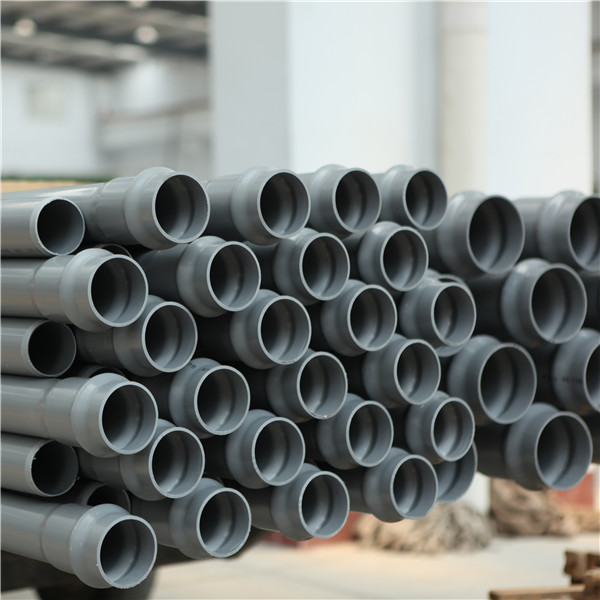දෙසැ. . 07, 2024 12:08 Back to list
hdpe welding rod
The Importance of HDPE Welding Rods in Modern Industries
High-Density Polyethylene (HDPE) is one of the most widely used thermoplastic materials in various industries due to its strength, durability, and resistance to chemicals. An essential component in the processing and manufacturing of HDPE products is the HDPE welding rod. This article delves into the significance of HDPE welding rods, their applications, and the processes involved in HDPE welding.
What are HDPE Welding Rods?
HDPE welding rods are elongated strips of HDPE material that are used as filler material in the welding process. They are specifically formulated to match the physical and chemical properties of HDPE, ensuring a strong bond when joining two HDPE surfaces. Available in various diameters and lengths, these rods facilitate the fusion of HDPE sheets, pipes, and other components through processes such as extrusion welding, hot gas welding, and socket welding.
Applications of HDPE Welding Rods
HDPE welding rods are utilized across a myriad of industries. Some of the most common applications include
1. Water and Wastewater Management HDPE is commonly used in pipe systems for transporting water and wastewater. The ability to weld HDPE pipes with welding rods ensures a leak-free joint, which is critical in maintaining the integrity of water supply and sewage systems.
2. Chemical Storage and Transportation Due to its resistance to various chemicals, HDPE is widely used for storage tanks and piping systems in the chemical industry. Welding rods allow for the creation of strong joints that can withstand the harsh environments associated with chemical transportation.
3. Construction In construction, HDPE is often used for geomembranes, which are essential for waterproofing and landfills. Welding rods are employed to join different sections of geomembranes to create a seamless barrier, essential for preventing leakage.
4. Agriculture Farmers use HDPE for irrigation systems and storage tanks for fertilizers and pesticides. Using welding rods in these applications ensures durability and long-lasting solutions that can endure the stresses of outdoor conditions.
5. Marine Applications The marine environment is harsh, and materials used in this context must resist corrosion, which is why HDPE is favored for dock components and other structures. HDPE welding rods ensure that components stay firmly in place, providing reliability in challenging conditions.
The Welding Process
The welding process of HDPE is crucial for achieving strong and durable joints
. The general steps involved includehdpe welding rod

1. Preparation Before welding, the surfaces to be joined must be cleaned of dirt, grease, and contaminants. Proper alignment of the parts is also essential for a successful weld.
2. Heating The HDPE welding rod and the surfaces to be joined are heated using specialized equipment. The temperature needs to be carefully monitored to ensure that the material reaches its melting point without degrading.
3. Fusing Once the material reaches the appropriate temperature, the welding rod is introduced, and pressure is applied to fuse the rod with the base materials. This process allows for the material to 'flow' together and form a strong bond.
4. Cooling After welding, it's essential to allow the joint to cool without disturbance. Proper cooling prevents the formation of weak spots that can compromise the integrity of the weld.
Benefits of Using HDPE Welding Rods
The use of HDPE welding rods presents several benefits that make them indispensable in various industries. These include
- Durability HDPE is known for its long lifespan and resistance to environmental factors, making welded joints particularly robust.
- Cost-Effectiveness By using HDPE welding rods, businesses can create reliable and enduring joints, reducing maintenance costs over time.
- Versatility HDPE welding rods can be tailored to meet specific applications, allowing for flexibility in design and use.
- Environmental Impact HDPE is recyclable, and utilizing welding techniques promotes sustainability by enabling the reuse of materials.
Conclusion
In conclusion, HDPE welding rods are vital components in the manufacturing process and maintenance of HDPE products across diverse industries. Their role in ensuring strong, durable, and chemically resistant joints cannot be overstated. As the demand for reliable and versatile materials continues to grow, the significance of HDPE welding rods will undoubtedly remain pivotal in advancing technology and infrastructure in the modern world.
-
Premium PP Welding Rod: GPT-4 Turbo Enhanced
NewsAug.01,2025
-
HDPE Drainage & Irrigation Pipe - Durable, Efficient Solutions
NewsAug.01,2025
-
Premium PVC Transparent Pipe: Durable & Clear Solutions
NewsJul.31,2025
-
High-Quality UPVC Electrical Pipe for Safe Wiring Solutions
NewsJul.30,2025
-
Premium PVC Pipe Fitting Supplier – Durable & Leak-Proof Solutions
NewsJul.30,2025
-
High-Gloss PVC Rigid Sheet for Durable & Smooth Surfaces | Wholesale Supply
NewsJul.29,2025

